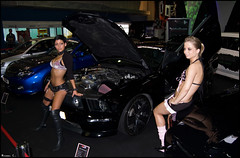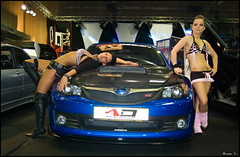
The above was all I had, and I wondered about the taxi, but Steve knew!

Not a good looking front, unique, but not good. The fenders and rear quarters are bad also. I knew I'd posted one years ago
http://justacarguy.blogspot.com/2009/06/before-big-boxy-taxi-checker-made-model.html
With the flip of a switch, the electrically operated top goes into the trunk

This is the landaulet version of the Checker Model A, which was built from 1939 until Checker switched to war production in 1941. The back top was electrically operated and disappeared into the body. It also had a sun roof. During the war, Checker donated the body dies to be melted down and recycled for the war effort.

This is thought to be the only remaining survivor from the 1939-1941 Model A Checker taxi. Photos were taken at the Checker Car Club of America show in 2002 at the Gilmore Museum

A handful of unusual-looking snouts appeared on American vehicles during the late thirties but none matched the monstrosity that premiered on the 1939 Checker Model A. The equally bizarre Sharknose Graham is the only other vehicle that could hold a candle to the Model A.
Checker designer John H. Tuttle is credited with designing the Model A’s bodywork from the cowl back, but the identity of the person who designed the front end is the subject of much debate. Ray Dietrich served as a consultant to the firm starting in the late 30s, however he emphatically denied any involvement with the firm’s taxi designs rig up until his death.
Tuttle’s name also appears on the patents for the cars optional rear landaulet roof, and it’s probable that he also worked on the front end, however it’s entirely possible a third designer, perhaps even Morris Markin himself, designed
the front end, whose main claim to fame was that it is so ugly, you could see it coming from up to half-a-mile away.
The headlights were modern oval units mounted to the front fenders in the typical fashion, however those beams were surrounded by massive chrome-plated art-moderne shields unlike any seen on any other vehicle. Body colored louvered valances provided cooling to the radiator which was hidden behind the solid beak that extender downwards from the center of the hood.
The short wheelbase Model A included a purpose-built 124-inch wheelbase chassis with a traditional solid front and live rear axles supported by longitudinal leaf springs. The independent front suspensions found on other manufacturer’s vehicles were easily knocked out of alignment and were far too fragile for taxicab use.
The Model A included a number of more practical innovations such as an automatic signal that alerted pedestrians when the cab was put into reverse, padded finger guards on the rear door edges and rear seats that were stuffed with synthetic rubber cushions.
The Model A was introduced mid-year and was powered by a Continental Red Seal Six, an engine that would become standard equipment until 1965 when the firm adopted a General Motors powerplant. The John H. Tuttle-designed sunroof and landaulet rear top were optionally available on either of the two available wheelbases.
A period review called the Model A:
"...the most radical innovation of the entire taxicab industry this year. Checker's disappearing top is attracting widespread attention in the larger cities where its Parmelee system fleets operate.... The all-metal landaulet can be opened or closed by the driver in 40 seconds, without moving from his seat...the cab is equipped with a glass roof that can be readily opened or closed by the driver at the will of his fare."
The model A was the last prewar Checker taxicab, and only a single survivor, a long-wheelbase model equipped with the landaulet roof, exists. At the start of the war Markin donated the Model A’s body dies to melted down for the war effort.
Info from and read all about the Check taxi cab manufacturer here
http://www.coachbuilt.com/bui/c/checker/checker.htm

 Above images from http://www.jalopyjournal.com/forum/showthread.php?t=226791&showall=1
Above images from http://www.jalopyjournal.com/forum/showthread.php?t=226791&showall=1


 Above images from http://gasballoon.com/V8JAP.htm
Above images from http://gasballoon.com/V8JAP.htm Air cooled V8 with exposed valvetrain and "total loss" oiling.
Air cooled V8 with exposed valvetrain and "total loss" oiling. Full gallery at http://tomorrowday.blogspot.com/2010/01/ja-preston-cyclecar.html
Full gallery at http://tomorrowday.blogspot.com/2010/01/ja-preston-cyclecar.html
























































